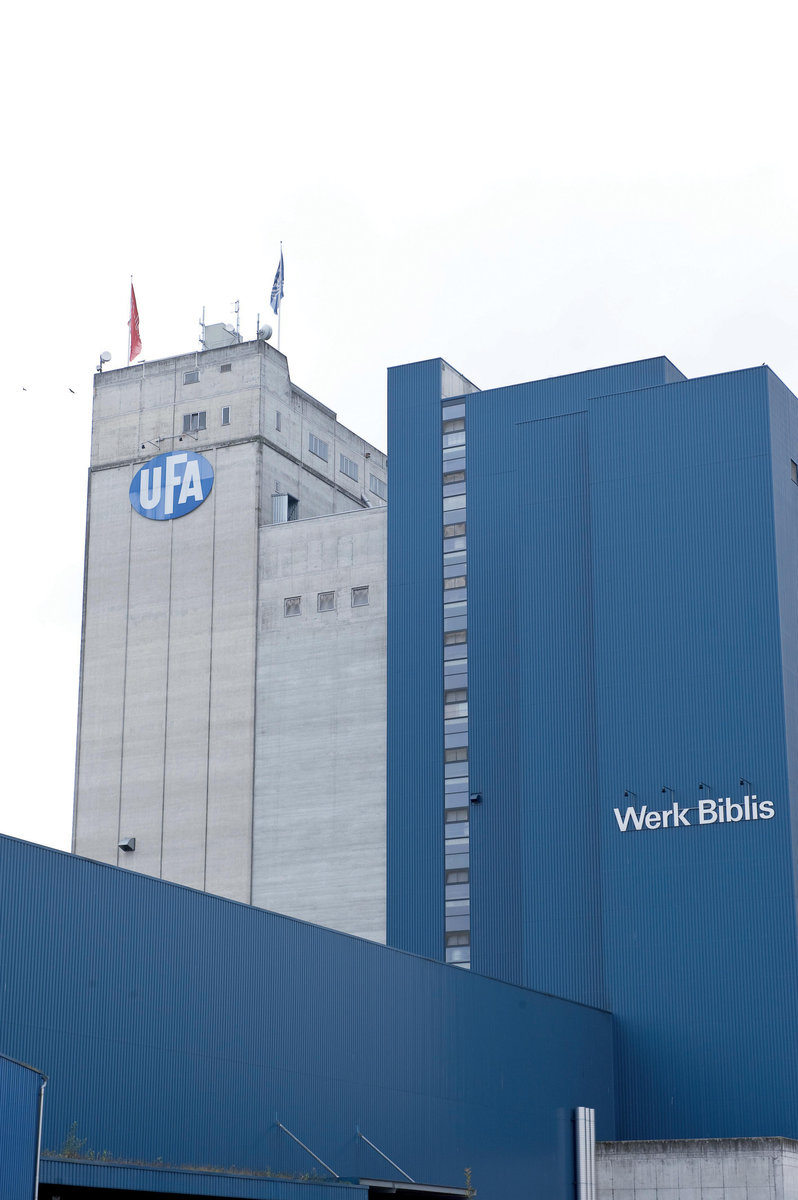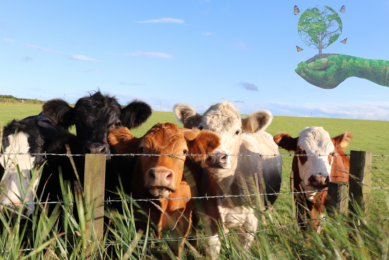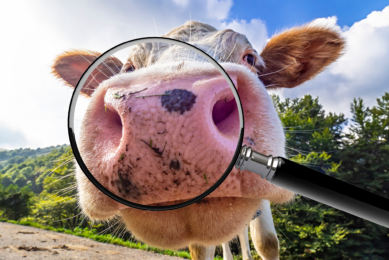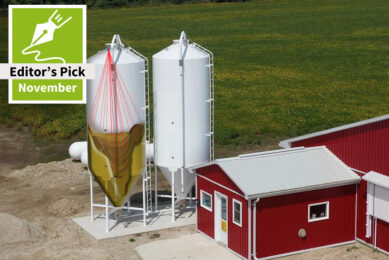Increasing the energy efficiency of feed mills

Energy efficiency leads not only to cost saving, but more importantly to reduced CO2 emission. Authors explained how they are implementing the increased energy efficiency in their mills.
By Peter Hofer, UFA production manager and Viktor Borner, segment sales manager, Bühler
UFA is Switzerland’s largest animal feed producer, with a combined annual production capacity of 545,000 tonnes at its four sites. The average electrical energy requirement was cut by 4% in the last ten years, and at the same time, thermal energy consumption was reduced by 10 kWh/t. This article aims to highlight the improvements achieved on a site-by-site basis – and also lays out ongoing implementations.
Biblis plant (Herzogenbuchsee)
This plant, constructed in 2001/2002, and having a production capacity of 300,000 tonnes per year, had already been constructed in a highly energy-efficient way. A multi-stage grinding system using two-pass crushing mills and vertical-rotor hammer mills reduce the energy requirements by about 30% compared to a direct grinding system.
- Achieved: The exhaust air of the compressed-air generators and blowers is used for the flake dryers and for blowing hot air into the thermal systems. The measures result in savings of 120 MWh of natural gas per year.
- Achieved: Smart control of the compressed-air generators and a pressure band reduction save about 0.5 GWh of electrical energy per year.
- Planned: Installation of a fifth thermal line, equipped with a Kubex T9 pellet mill. These new generation pellet mills have direct drives. Their motors have an energy efficiency exceeding 95% and are water-cooled, and losses due to gearings or V-belt drives are eliminated. This allows electrical energy savings of 20-30% compared to conventional pellet mills.
- Planned: Application of differential-pressure controllers on the large dust collection filters. They enable the purge-air requirement for cleaning the filter bags (sleeves) to be slashed. The pay-back period of this investment is a few months.
St Margrethen plant
This plant was rebuilt in 2006/2007 and has a production capacity of 90,000 tonnes per year. The post-grinding system is equipped with a pre-screening stage ahead of the vertical-rotor hammer mills. This combination cuts the energy requirement by about 20% in comparison to conventional horizontal hammer mills. Frequency converters allow the grinding texture of feed to be adjusted during production and markedly reduce the starting current.
- Achieved: The exhaust heat of the compressed-air generators and the flash steam of the condensate separation system of the steam boilers are used for preheating the feed water. This cuts annual natural gas consumption by 210 MWh.
- Planned: Application of differential-pressure controllers on the large dust collection filters, which slashes the purge-air requirement. The payback time of this investment is just a few months.
Puidoux plant
This plant was constructed in 1993, and expanded in 2010 and produces up to 70,000 tonnes per year. This factory was acquired by UFA in 2005. In 2010, a third thermal line including a HYSYS pelleting system was installed, taking following measures:
- Achieved: Installation of a Capstone C65 microgas turbine for generating electrical energy, with a maximum (net) output of 60 kW. The 300°C hot exhaust gases are first used for heating the feed water for the steam boiler and then the water of the building heating. The entire residual heat contained in the hot exhaust gases is mixed with the turbine cooling air and the ambient air, then blown as hot air into the thermal systems for drying. This system configuration allows nearly 100% utilisation of fuel.
- Achieved: Installation of low pressure purged dust collection filters with differential-pressure controllers for the pellet coolers. The purge air blower is equipped with a frequency converter and supplies only required amount of compressed air, which can be activated and deactivated as required.
- Achieved: Cooler fans have been provided with frequency converters. This markedly reduces the starting current and allows energy-optimised operation as a function of the ambient temperature.
- Planned: Installation of a multistage grinding system using two-pass crushing mills and vertical-rotor hammer mills, which reduce the energy requirement by 30% in comparison to a direct-grinding system. The grinding texture can be automatically controlled by the process control system.
Sursee plant
This plant was constructed in 1965, expanded in 2007 and has a production capacity of 85,000 tonnes per year. The factory is the oldest mill operated by UFA. In 2007, it underwent a thorough overhaul and was equipped with a modern process control system allowing unmanned operation.
The Bühler standard control system served as the basis. A challenge was to programme the control system for unattended night time operation. UFA’s specifications were the following: The mixing line and the pellet mill and expander line were to produce feed fully automatically during the night shift. This means that the control system of the plant must move to a secure mode in the event of faults. In addition, it must ensure plant and personnel safety all the time. The new system can alert staff in case of incidents; remote maintenance is also possible. In unmanned operation, the control system must make the decisions that are otherwise made by the experienced operator. For example, sensors monitor the temperatures and vibrations in the hammer mill, the mixer, the expander as well as the machine bearings.
- Achieved: Installation of a multistage grinding system using two-pass crushing mills with pre-screening and intermediate screening ahead of the hammer mill. This cuts the energy requirement by about 30% compared to a direct grinding system. The grinding texture can be automatically controlled.
Energy saving continues
In order to further reduce energy consumption, UFA adapts its feed mills to the latest technology. For example, over the past ten years about 5% electrical energy and 17% thermal energy per metric ton of feed produced have been conserved – while the rate of thermally hygienised feed to total products was increased from 60% to 100%.
Efficient energy utilisation
Utilisation by combustion of the energy that is chemically stored for generating electrical power as the highest-value form of energy improves the calorific value of the heating oil by a factor of about three compared to pure steam generation. This so-called ‘combined heat and power generation’ process substantially increases exergetic efficiency, which can be converted into another energy form without loss. This means that the chemical potential contained in the fuel (heating oil, natural gas) is exploited almost to the physically possible limit, since electric power is generated besides heat.
Exhaust heat of compressors
Instead of blowing the heat exhausted by the air compressors into atmosphere, it is systematically utilised for preheating the boiler feed water or operating hot-air heat exchangers instead of using steam. Together with other heat recovery measures, the use of exhaust heat alone enabled UFA to save a total of about 880 MWh of thermal energy in 2011. This is equivalent to a steam quantity of about 1,300 metric tonnes. Additional 1 GWh in electric power was saved by efficiency improving measures.
CO2 Label
UFA has a comprehensive energy management system, ranging from saving power by using a staircase lighting control system (5 MWh/a) to refurbishing entire plants. This has allowed the UFA factories to discharge 500 metric tonnes less CO2 into the atmosphere than in 2008 while increasing feed volume by 10%. In all, some 3,100 tonnes less CO2 were emitted in 2011 than when operated without these measurements. Thanks to the targeted reduction of carbon emissions, UFA is exempt from paying CO2 duties on fuels and is allowed to carry the Swiss CO2 Label.












